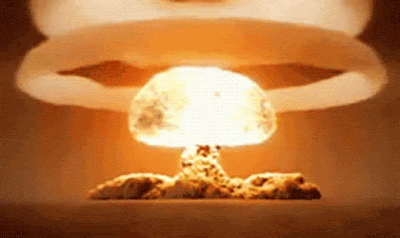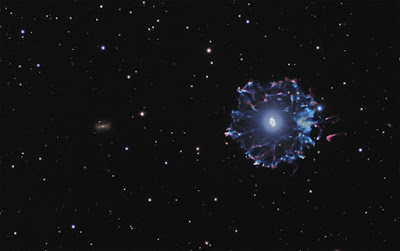
"The Graveyard of Empires:
The Top Investments as the World Order Collapses"
by Nick Giambruno
Excerpt: “You have the watches, but we have the time.” The Taliban often referred to this old Afghan saying when discussing their fight against the Americans. Ultimately, they were proven correct. After almost two decades of conflict, an insurgent army from one of the world’s poorest nations inflicted a decisive military defeat on the US, the global superpower that upholds the unipolar world order. The US government’s total failure in Afghanistan - the longest war in American history - signifies a crucial moment and turning point in world history.
The Soviet Union collapsed about two years after the Red Army was defeated and withdrew from Afghanistan. As we approach the second anniversary of the American retreat, could a similar fate be in store for the US? While nobody knows the future, there is an excellent chance that the colossal failure in Afghanistan could accelerate the unraveling of the geopolitical power of the US and the shift to a multipolar world order.
Afghanistan’s strategic position has always made it a coveted prize in the Eurasian landscape. As shown in the image below, Afghanistan is situated in the center of Eurasia, at the crossroads of China, Iran, and Russia - the three primary challengers to the US-led world order.
This central location is why Afghanistan has enormous geopolitical importance and why the US desired a strategic military presence there.

The US military’s presence in Afghanistan was a strategic roadblock to Russia, China, and Iran’s goal of creating a powerful geopolitical group in Eurasia that could challenge the US-led world order. However, with the Taliban forcing the US military out of Afghanistan, the door to a more coherent geopolitical alliance in Eurasia is now wide open. In short, failure in Afghanistan is a geopolitical disaster for the US.
For at least the past decade, China, Russia, and Iran have been working on an impressive plan to connect Eurasia - even while the US military was in Afghanistan. This trend will likely speed up now that the US military is no longer physically in their way. Here’s what they have been working on…
China, Russia, and Iran are constructing a vast network of land-based transportation infrastructure, making the US Navy’s control of the oceans less significant.
China’s New Silk Road project is central to this new system. It aims to bypass the US financial system and the US Navy’s control of sea routes. The project, planned to be operational by 2025, includes high-speed railways, highways, fiber optic cables, energy pipelines, seaports, and airports.
These Eurasian powers are also establishing alternative international organizations for financial, political, and security cooperation, separate from those central to the US-led world order, institutions like NATO, the World Bank, SWIFT, and the IMF. Some notable examples include the Asian Infrastructure Investment Bank (AIIB), launched by China in 2014 and is an alternative to the IMF and World Bank.
The Eurasian Economic Union (EEU), a Russian-led trading bloc created in 2015, allows for the free movement of goods, services, capital, and people among its member countries. Lastly, the Shanghai Cooperation Organization (SCO) focuses on military and security collaboration between its members.
If current trends continue, it will result in greater economic, political, and security collaboration among the three main Eurasian nations—China, Russia, and Iran—at the expense of US geopolitical interests. This scenario is exactly what Zbigniew Brzezinski worried would make the US “geopolitically peripheral.” It spells the end of the unipolar world order. In short, we are on the path to the emergence of an alliance of powerful Eurasian countries and a multipolar world order.
As the world order changes, I think there are two prominent outcomes we can bet on.
The US Dollar Will Lose Its Privileged Position. The decline of America’s geopolitical influence is another enormous headwind for the US dollar. Suppose the world thinks the US military is the ultimate backstop of the US dollar. What does it mean for the US dollar’s credibility when a ragtag group of insurgents from one of the poorest countries can defeat the military which backs it? If the mighty US military couldn’t secure its partners in Afghanistan, how can it protect its other allies?
Taiwan, South Korea, Japan, Western European countries, and the Gulf Arab states are likely pondering this. It wouldn’t be surprising to see them make security arrangements with US adversaries - such as China, Russia, and Iran - that exclude the Americans. In fact, this has already happened with Saudi Arabia, a crucial player in the US-led world order. Saudi Arabia is the linchpin of the petrodollar system, which has underpinned the US dollar since Nixon removed its last links to gold in 1971.
In a matter of weeks, Saudi Arabia has:
Restored relations with Iran.
Restored relations with Syria and welcomed it back to Arab League.
Supported multiple OPEC+ oil production cuts against American wishes.
Announced an end to the war in Yemen.
Agreed to sell oil in other currencies.
Decided to join the Shanghai Cooperation Organization (SCO).
The US recently sent its CIA director to Riyadh to tell the Saudis the Americans feel “blindsided” amid these seismic shifts in Saudi foreign policy. In short, a paradigm shift in Saudi policies signifies a paradigm shift in the US dollar because of the petrodollar system.
However, Saudi Arabia is not the only US ally hedging its geopolitical bets recently. France, India, Japan, Mexico, Brazil, and others are making moves to cozy up to the Eurasian geopolitical block. The big question is, how long will the world continue to hold the paper liabilities of a bankrupt and declining government?
While the US dollar is the leading global currency, it was already on a path of inevitable debasement and eventual collapse - even before considering the compounding effects of a multipolar world order.
The only reason the US government has managed to avoid severe consequences from its monetary policies is the US dollar’s status as the world’s premiere reserve currency, thanks to Washington’s military and economic dominance that has prevailed since the end of World War II. However, as this dominance wanes, so will the dollar’s purchasing power. The US government’s ability to hide the effects of its rampant money printing by offloading trillions of dollars to foreigners is nearing its end. That’s terrible news for the US dollar.
Now, that doesn’t mean I’m excited about the Chinese fiat currency - or whatever new monetary concoction the Eurasian block comes up with. Ultimately it will be nothing more than the liability of a new grouping of corrupt politicians and bureaucrats."
Full article here:



























